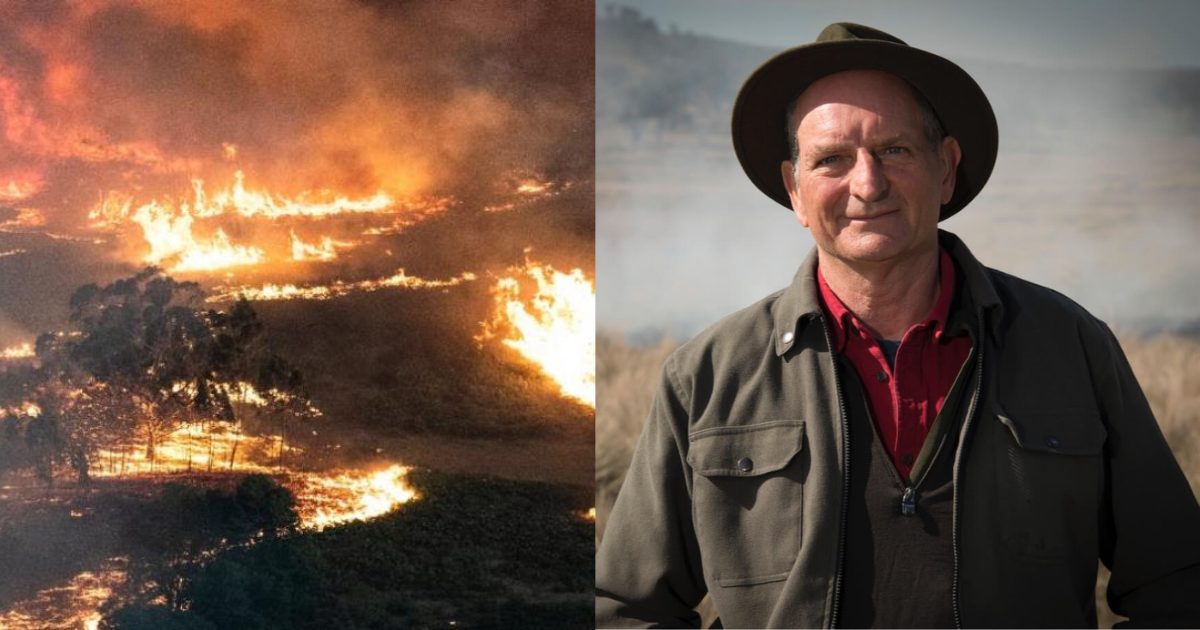“We’re the guinea pig”: Phillip Island suburb on the frontline of rising sea levels
The Silverleaves shoreline has receded 77 metres since 1953 and erosion is accelerating.

Ken Hailey stands on top of a wall of sand on Phillip Island’s Silverleaves beach. He is gesturing up and down the shoreline, describing a combination of storms, erosion and a rising ocean that have removed six metre high sand dunes over the last four years and put a whole community at risk.
“You can see how much has been lost,” said Hailey. “If you've got a strong north or northwesterly, the waves start at the western end and build up momentum until they sweep out of the eastern end which has caused this massive erosion.”
A rock wall solution: In April this year the Department of Energy, Environment and Climate Action (DEECA) installed a 150 metre rock bag wall at Silverleaves as part of a $15 million package to address coastal erosion in the state.
As a short term solution DEECA has also been renourishing the sand dunes on the beach – but Hailey says it’s to little avail.
“The beach has been renourished three times in the last four months, at a cost of $30,000 to $40,000 per renourishment. The last one was done less than a week ago, and it looks like two thirds of it is already gone.”

The rock wall at Silverleaves beach.
Where’s it all going? A DEECA report released in July last year stated the western shoreline at Silverleaves has receded about 77 metres since 1953.
The report also shows that this erosion is accelerating.
The shoreline was retreating 1.8 metres a year between 2018 and 2022 but since 2022 that recession rate has increased to 6 metres a year.
“People are frightened,” said Hailey. “If the water comes in, not only have you got houses, you've got roads, electricity, septic tanks and a lot of other infrastructure damage.”
Hailey said Silverleaves has a large elderly population with a lot of residents looking to go into nursing homes.
“They cannot sell their houses and they’re in big trouble. This is the human cost of inaction.”

Hailey said around Easter is the worst time for storms.
A storm change a’coming: Hailey said part of the problem is an increase in the number of storms coming down from the north of Australia, which has accelerated the erosion at one of Victoria’s only north facing beaches.
🗣️Dr Milton Speer, a meteorologist at the University of Technology Sydney, told the Monitor he has been observing the same changes in weather patterns - more storms veering to the south instead of coming mostly from the west of southwest.
Speer said during winter months Victoria has “been getting thunderstorms, but not the normal westerly winter rain fronts, which is a little bit more benign than these heavier downpours that are forming”.
Changes in surface temperature – and in the upper atmosphere – has meant that “since about the 1990s and particularly in the last decade or so, it's the northerly or northwesterly winds that dominate the surface weather in Victoria”.
Speers told the Monitor that rising global temperatures were the cause of these changing weather patterns.
“The oceans are heating up, the air is heating up. That means there's more moisture that can go into the atmosphere. That means you can get more moisture falling out as rain.”
Australia’s coastal problem Coastal erosion and sea level rise is not a problem unique to Silverleaves. More than 80 percent of Australia’s population live on or close to the coast.
According to the CSIRO, the rates of sea-level rise to the north and southeast of Australia have been significantly higher than the global average since 1993.
The Victorian government currently plans for sea level rise of “not less than 0.8 metres by 2100”, but other state projections indicate there could be a rise of 1.2-1.4 metres.
A report from the CSIRO showed that a sea level rise of 1.4 metres would cause severe inundation in Port Phillip Bay.
“We’re one of the first communities in Victoria that this is happening to,” said Hailey. “We’re the guinea pig. How the government reacts to Silverleaves is very important. We’re the forerunner of what half of Melbourne is going to face.”

